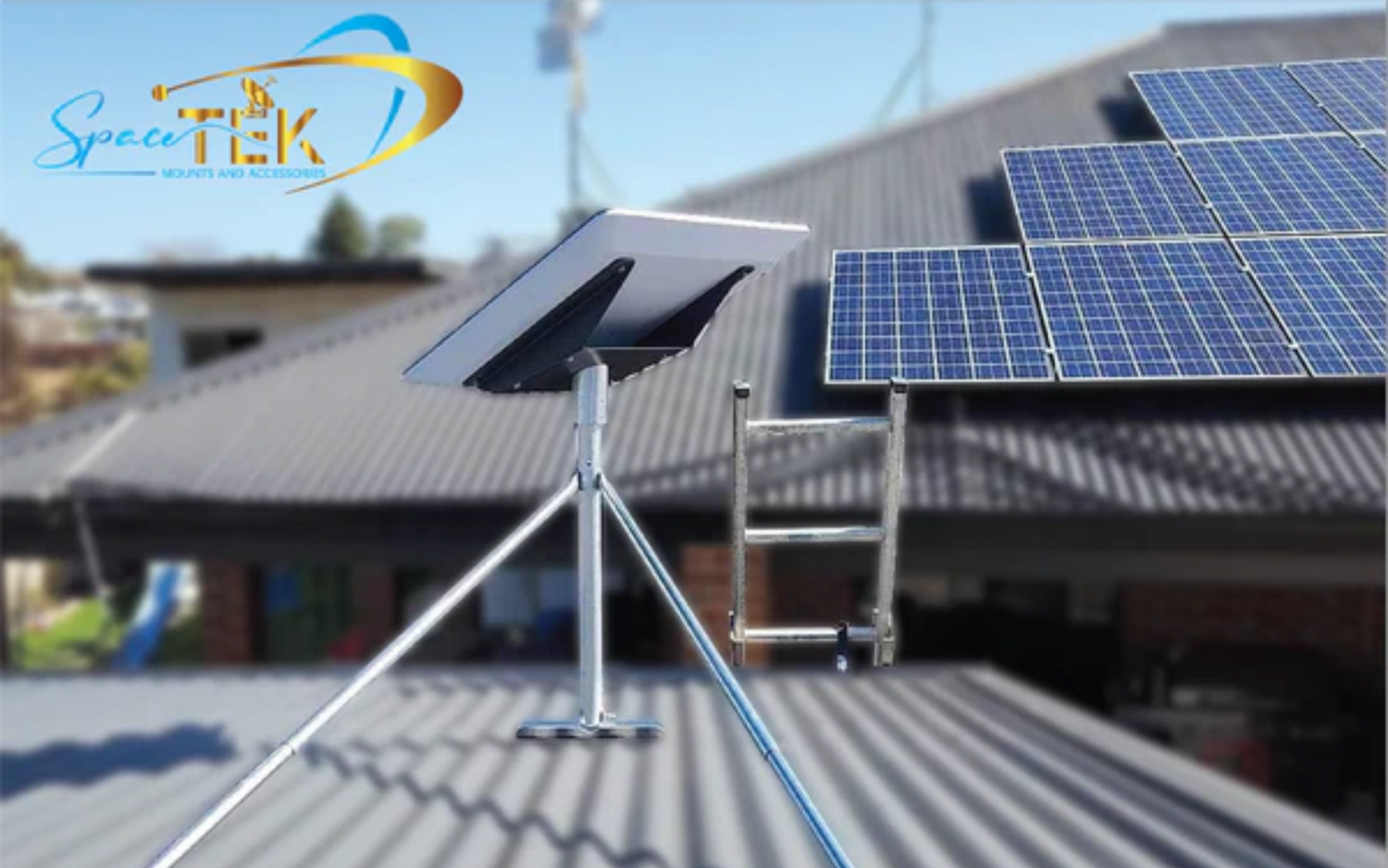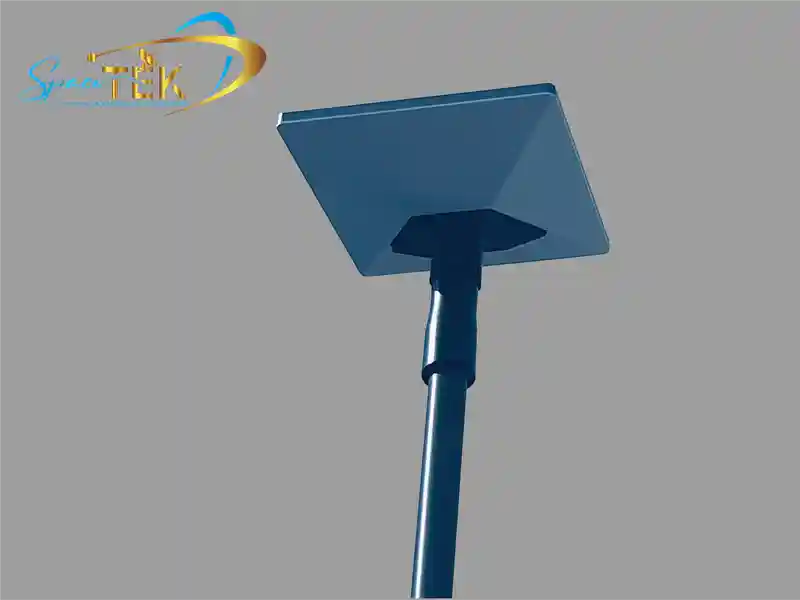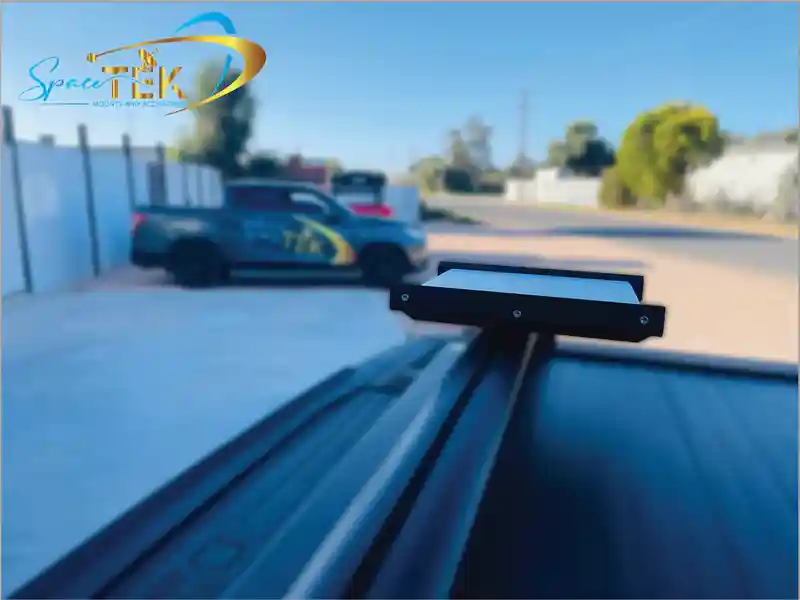Why Wind is Your Starlink's Biggest Rooftop Rival
A starlink mount for rooftop wind must do more than support your dish's weight; it needs to resist powerful forces that can disrupt your connection or damage your equipment.
Quick Answer: Essential Features for Wind-Resistant Starlink Mounts
- Material: Aluminium, stainless steel, or carbon fibre for strength and corrosion resistance.
- Base Design: Wide footprint or secure drilling into structural beams.
- Wind Rating: High-quality mounts are rated for significant wind speeds, often exceeding 96 kph, to ensure stability in storm conditions.
- Aerodynamics: Low-profile design reduces drag and lift forces.
- Installation: Must anchor to roof trusses or structural supports, not just surface materials.
Wind creates two main forces on your Starlink dish: drag (horizontal push) and lift (upward pull). Both can cause your dish to vibrate, move, or detach from your roof, leading to signal interruptions or expensive damage.
In Australia's varied climate—from coastal gales to inland storms—your mount isn't just an accessory; it's essential infrastructure. I'm Aaron Wroblewski, founder of SpaceTek Australia. With over 25 years of experience, I've seen the damage caused by inadequate mounts. My focus on starlink mount for rooftop wind performance comes from a commitment to providing robust, Australian-made solutions that withstand our toughest conditions.
Handy starlink mount for rooftop wind terms:
Choosing the Right Starlink Mount for Rooftop Wind
When setting up Starlink on an exposed rooftop, your mount choice is the difference between reliable internet and a disaster. At SpaceTek Australia, we know what works in Australian winds and can help you choose correctly from the start.
Key Features of a Wind-Resistant Mount
A quality starlink mount for rooftop wind actively resists the forces trying to tear it from your roof.
- Material Choice: This is fundamental. We use aluminium for its excellent strength-to-weight ratio and natural corrosion resistance, making it ideal for most Australian conditions. For extreme wind loads, stainless steel offers superior strength, while carbon fibre provides impressive strength for specialised, lightweight applications.
- Aerodynamic Design: A low-profile, aerodynamic shape minimises wind forces by presenting less surface area, reducing both drag and lift.
- Secure Foundation: A wide base combined with secure fixings that anchor into structural beams distributes wind loads, preventing stress concentration and potential failure. We build our reputation on these genuinely SpaceTek high duty mounts.
Mounting Options for Rooftop Wind Resistance
Your roof, local wind patterns, and preferences will determine the best mount type.
Drilled mounts offer the most secure attachment by anchoring into your roof's structure. Options include wall mounts for stability near the roofline and pivot mounts to keep the dish vertical on sloped roofs. For a watertight seal, flashing mounts are essential with any drilled installation on shingled or metal roofs.
Non-penetrating mounts are an excellent alternative if you want to avoid drilling. Ridgeline mounts, for example, use ballast weight (like concrete pavers) for stability on gable roofs and can handle significant winds (up to 80 kph) when properly weighted.
How do non-penetrating mounts compare to traditional drilled mounts?
| Feature | Drilled Mounts (e.g., Pivot, Wall Mounts) | Non-Penetrating Mounts (e.g., Ridgeline, Ballasted) |
|---|---|---|
| Wind Resistance | Generally highest, as they anchor directly to structural elements | Excellent when properly ballasted; stability depends on weight and footprint |
| Roof Integrity | Requires penetration, increasing leak risk if not installed correctly | Preserves roof integrity with no penetration points |
| Installation | More complex, requires drilling, sealing, and locating structural beams | Easier, no drilling required, but needs significant ballast weight |
| Roof Type Suitability | Versatile, but requires careful waterproofing for shingled/metal roofs | Best for flat or low-slope roofs; ridgeline for gable peaks |
Drilled mounts offer maximum stability, while non-penetrating mounts preserve your roof. For more insights, see our article on roof vs. pole mounts.
Solutions for Different Starlink Kits and Uses
Each Starlink generation has unique mounting needs. We've engineered solutions for all of them.

- Starlink Gen 2: Our Gen 2 mounts provide a solid foundation for the rectangular dish, handling its specific size and weight distribution in high winds.
- Starlink Gen 3/V4: Our Gen 3 V4 mounts and accessories are engineered for improved stability, with special attention to the demands of mobile use.
- Starlink Mini: The compact Mini requires a mount that provides maximum strength without interfering with its internal GPS chip. Some materials can cause signal disruption, but our carefully designed aluminium Starlink Mini mounts are engineered to deliver secure, interference-free performance, even in high winds.
- RV and Portability: Our RV and portability mounts are engineered for secure attachment and rapid setup, keeping you connected while caravanning or overlanding.
Installation Best Practices for Your Starlink Mount for Rooftop Wind
Even the best mount will fail if installed incorrectly. Follow these key practices.
- Location Selection: Use the Starlink app's obstruction tool for a clear sky view. Consider local wind patterns by checking resources like the Australian Bureau of Meteorology to avoid turbulent areas.
- Find Structural Beams: For drilled mounts, always anchor directly into roof trusses or structural members.
- Secure Fastening: Use appropriate hardware (e.g., lag screws) and tighten them securely into structural members.
- Weatherproofing: Seal every roof penetration with high-quality silicone or mastic tape to prevent leaks.
- Cable Management: Secure loose cables with clips to prevent wind flap, which creates drag and can damage the cable.
For more detailed steps, see our guide on how to install a Starlink roof mount.
How to Verify the Stability of Your Starlink Mount for Rooftop Wind
After installation, a quick check ensures your mount is ready for the wind.
- The "Wobble Test": Give the dish a firm shake. Minimal movement is good; if it wobbles, re-check your fastenings.
- Post-Wind Checks: After strong winds, inspect for loose screws or signs of stress.
- Monitor the App: Frequent outages during windy weather suggest excessive movement.
What are the risks of an inadequate mount?
- Dish Damage: Bent masts, cracked casings, or damaged internal motors.
- Roof Damage: Leaks or structural issues from a torn-away mount.
- Signal Loss: Frustrating dropouts caused by dish movement.
- Safety Hazard: A dislodged dish can become a dangerous projectile.
Doing it right the first time helps you avoid common DIY Starlink mounting mistakes and saves money in the long run.
Product Spotlight: SpaceTek Mounts for Every Starlink Kit
We've engineered every starlink mount for rooftop wind to outlast the dish it holds, standing firm against Australia's relentless weather. Each SpaceTek mount uses rust-resistant materials and integrates seamlessly with Starlink's self-installer kits for professional-grade security.
Starlink Gen 2 Mounts
The reliable Gen 2 dish needs a rock-solid foundation. Our Gen 2 mounts use high-grade, corrosion-resistant materials to provide a stable platform that won't budge in high winds, ensuring optimal signal alignment.
Starlink Gen 3/V4 Mounts
Engineered for the latest Starlink technology, our Gen 3 V4 Mounts and Accessories feature low-profile aerodynamics and secure anchor points to handle serious wind loads, delivering smoother performance with fewer interruptions, especially for mobile applications.
Starlink Mini Mounts
Compact doesn't mean less secure. Our Starlink Mini mounts are engineered for both permanent and mobile use, using materials like aluminium that won't interfere with the dish's GPS chip while providing maximum strength.
RV and Portability Mounts
For life on the road, our RV and Portability mounts are built to withstand constant vibration and sudden wind gusts. They are designed for rapid setup and breakdown, keeping travellers connected across Australia's diverse terrain.
Conclusion: Securing Your Connection Against the Elements
When keeping your Starlink connected in Australia, the right starlink mount for rooftop wind is critical. It's about protecting your investment, maintaining your connection, and avoiding costly repairs.
As we've covered, a mount's ability to withstand wind comes down to its material, design, and installation. Quality materials like aluminium and stainless steel provide strength and corrosion resistance. An aerodynamic, low-profile design with a wide base is crucial for distributing wind forces and preventing stress on your roof.
Choosing the right installation method—be it a drilled or non-penetrating mount—is key. However, even the best hardware will fail if installed incorrectly. Anchoring to structural beams, using quality sealant, and managing cables are essential steps for long-term reliability.
We offer purpose-built solutions for every scenario, from Gen 2 mounts and Gen 3 V4 options to compact Mini mounts and robust RV solutions.
At SpaceTek Australia, we've spent over 25 years engineering hardware for our climate. Our mounts are compatible with Starlink's self-installer kits and use rust-resistant materials that won't fail under our harsh sun or coastal salt air. We provide the most secure and user-friendly Starlink mounting solutions in Australia because we know what works here.
Your internet connection shouldn't be at the mercy of the weather. If you're unsure which mounting solution is right for you, our team is here to help. Get in touch with us for expert advice custom to your needs.



Leave a comment
This site is protected by hCaptcha and the hCaptcha Privacy Policy and Terms of Service apply.